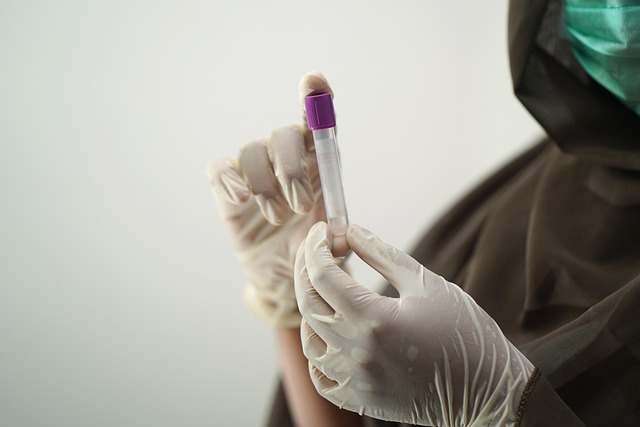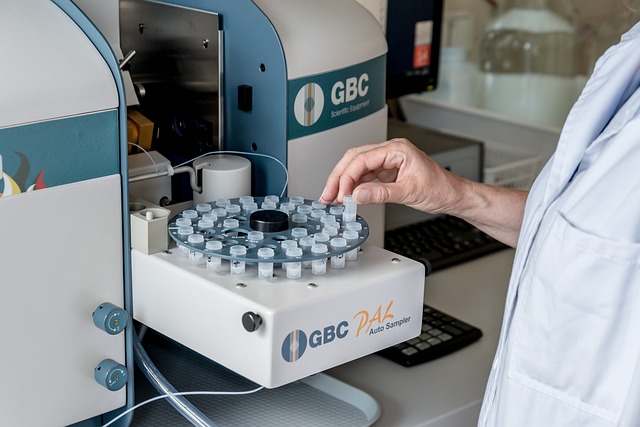A simple home blood test for ferritin levels in the UK helps diagnose iron deficiency, a common nutritional issue. This convenient method allows individuals to monitor their iron status, with normal adult ranges typically between 20-150 mcg/L. Low ferritin indicates potential iron lack, prompting further evaluation by healthcare professionals for tailored treatment.
Iron deficiency is a common but often overlooked health issue, especially in the UK. One key indicator of iron levels is ferritin, a protein that stores and releases iron as needed by the body. This article explores how understanding ferritin levels can help diagnose iron deficiency and highlights the growing trend of home blood testing kits available in the UK. By learning to interpret these results, individuals can take proactive steps towards maintaining optimal iron health.
- Understanding Ferritin: The Key to Iron Health
- Home Blood Testing for Iron Deficiency
- Interpreting Results: Diagnosing Iron Lack
Understanding Ferritin: The Key to Iron Health

Ferritin is a protein that plays a vital role in iron health, acting as a natural storage depot for iron within our bodies. It’s like a safe-keeper ensuring there’s enough iron available when needed. Levels of ferritin can be measured through a simple blood test, offering a direct glimpse into our iron reserves. In the UK, accessing this essential blood test at home has become increasingly convenient, allowing individuals to take control of their health.
Understanding ferritin levels is crucial in diagnosing iron deficiency, a common nutritional issue affecting many. Low ferritin values can indicate inadequate iron intake or impaired absorption, highlighting the need for intervention. This simple blood test provides valuable insights into our body’s iron status, guiding healthcare decisions and ensuring optimal nutrition.
Home Blood Testing for Iron Deficiency

In recent years, home blood testing kits have gained popularity as a convenient way to monitor one’s health. One such test that has proven valuable in diagnosing iron deficiency is ferritin level measurement. These at-home tests allow individuals in the UK to easily check their ferritin levels from the comfort of their homes. By simply pricking a finger for a small blood sample, patients can obtain results that provide insights into their iron status.
Home blood testing offers several advantages, including accessibility and timeliness. With a few simple steps, individuals can assess their risk of iron deficiency without the need for extensive medical infrastructure. This method is particularly useful for those with busy schedules or limited access to healthcare services, enabling early detection and management of potential iron-related issues.
Interpreting Results: Diagnosing Iron Lack

When considering ferritin level testing for iron deficiency, interpreting the results is a crucial step in diagnosing iron lack. A blood test at home UK can provide valuable insights into your body’s iron storage capacity, with ferritin levels typically measured in micrograms per litre (mcg/L). Normal ferritin ranges vary slightly between labs but generally fall between 20-150 mcg/L for adults. Levels below 20 mcg/L are often indicative of iron deficiency, as it suggests insufficient iron storage.
If your test results show a low ferritin level, further evaluation is necessary to confirm iron deficiency anemia. Healthcare professionals may recommend additional tests, such as hemoglobin levels and red blood cell counts, to assess the extent of the deficiency and guide appropriate treatment. Addressing iron deficiency promptly is essential, as it can lead to various health complications if left untreated.
Ferritin level testing offers a convenient and accessible way to diagnose iron deficiency in the UK, especially with at-home blood testing kits. By understanding ferritin’s role in iron health and interpreting test results accurately, individuals can take control of their nutrition and overall well-being. This simple step may significantly impact managing and preventing iron deficiencies.
